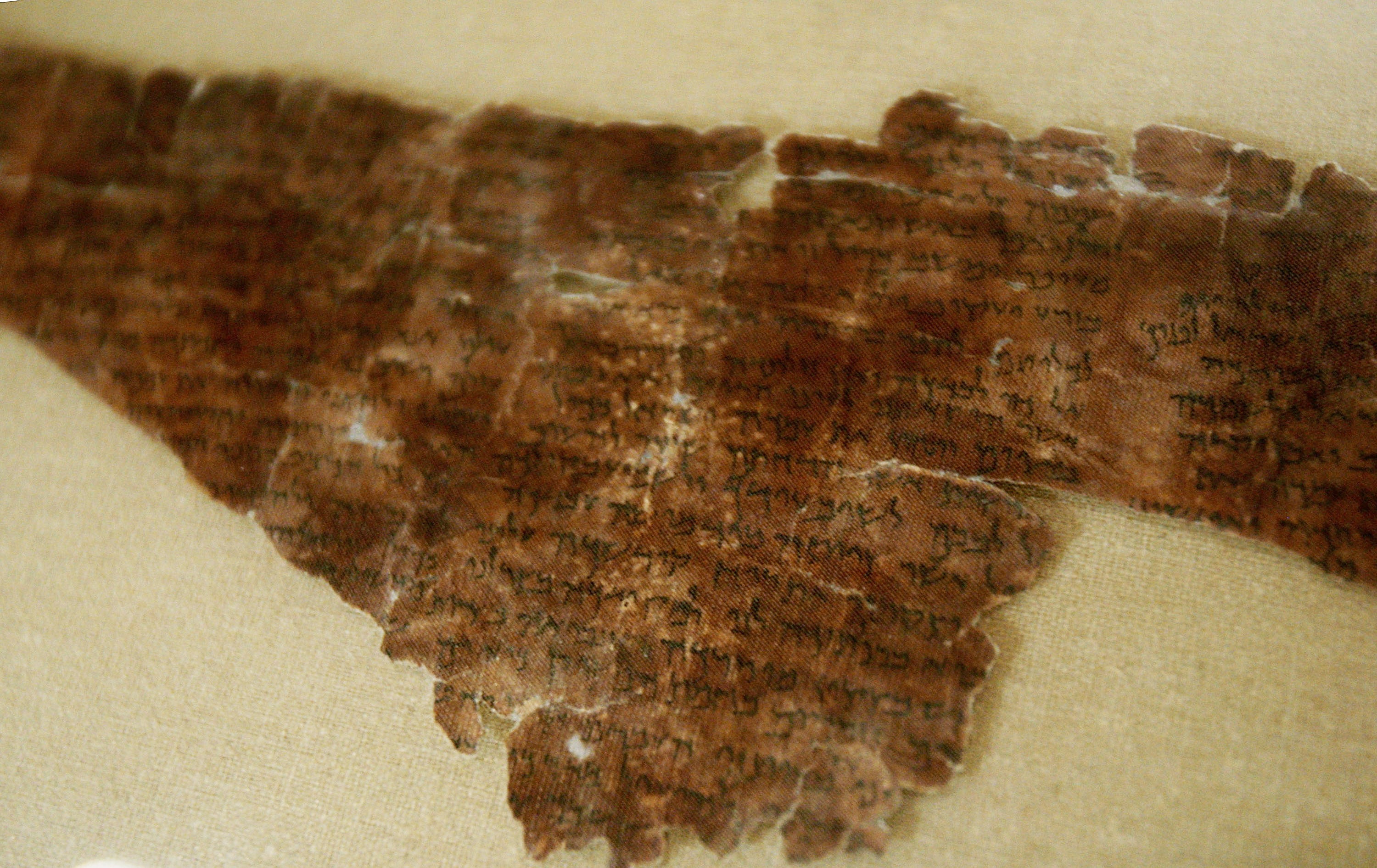Many of the manuscripts known as the Dead Sea Scrolls may be much older than previously thought, according to a new study that could transform our understanding of their Jewish and Christian origins.
The mysterious scrolls are a collection of ancient Jewish texts mainly written in Hebrew that were found in 1947 by nomadic Arab shepherds looking for a lost sheep.
They are the oldest Bible texts ever found, containing passages of the Old Testament from over 1,800 to 2,000 years ago.
Until now, a study of ancient handwriting suggests most of the scrolls are from the third century BC to the second century AD.
Some date-bearing manuscripts written in Aramaic/Hebrew have been estimated to be from the fifth or fourth centuries BC, and the late first and early second century AD.
But since most of the scrolls do not have any other date-bearing manuscripts for reference, the ages of the individual manuscripts haven’t been precisely estimated.
-shows-fragments-of-the-Dead-Sea-Scrolls-at-t.jpeg)
Archaeologists have yet to accurately date over a thousand manuscripts and fragments from the Dead Sea Scrolls collection.
Now, researchers have combined radiocarbon dating and an AI prediction model to arrive at a more accurate estimate of the age of individual manuscripts.
Scientists found that two biblical scroll fragments of the scrolls come from the same time as their presumed biblical authors.
These fragments have been objectively dated to between the fourth century BC and the second century AD, according to the latest study published in the journal PLOS One.
In the study, scientists trained their AI date-prediction model to analyse handwritten ink-trace patterns and digitised manuscripts.
The model was trained to analyse intricate geometries of the ink trace, looking into the curvature of each character’s shape, helping it probe the texts beyond what traditional palaeography offered.
Researchers cross-verified the AI model with texts that have already been convincingly dated.
They found that it could predict the age of manuscripts just from the writing style with an uncertainty of some 30 years.
Scientists then used the AI to date roughly one thousand Dead Sea manuscripts.

They first made the model analyse the digitised images of 135 scrolls and let professional palaeographers evaluate the AI’s predictions.
It then confirmed that many Dead Sea Scrolls are much older than previously thought, transforming our understanding of the development of two ancient Jewish scripts called “Hasmonaean” and “Herodian.”
Scroll fragments written in these scripts could belong to the late second century BC instead of the current prevailing view of the mid-first century BC.
Manuscripts in the Hasmonaean-type script could be older than their current estimate of 150 BC to 50 BC, researchers found.
It still remains a mystery who exactly wrote the manuscripts.
Researchers suspect it was an anonymous author from the Hellenistic period of the third century BC.
The latest findings impact our understanding of political and intellectual developments in the eastern Mediterranean during the Hellenistic and early Roman periods, scientists say.
-shows-fragments-of-the-Dead-Sea-Scrolls-at-t.jpeg?width=1200&height=800&crop=1200:800)
